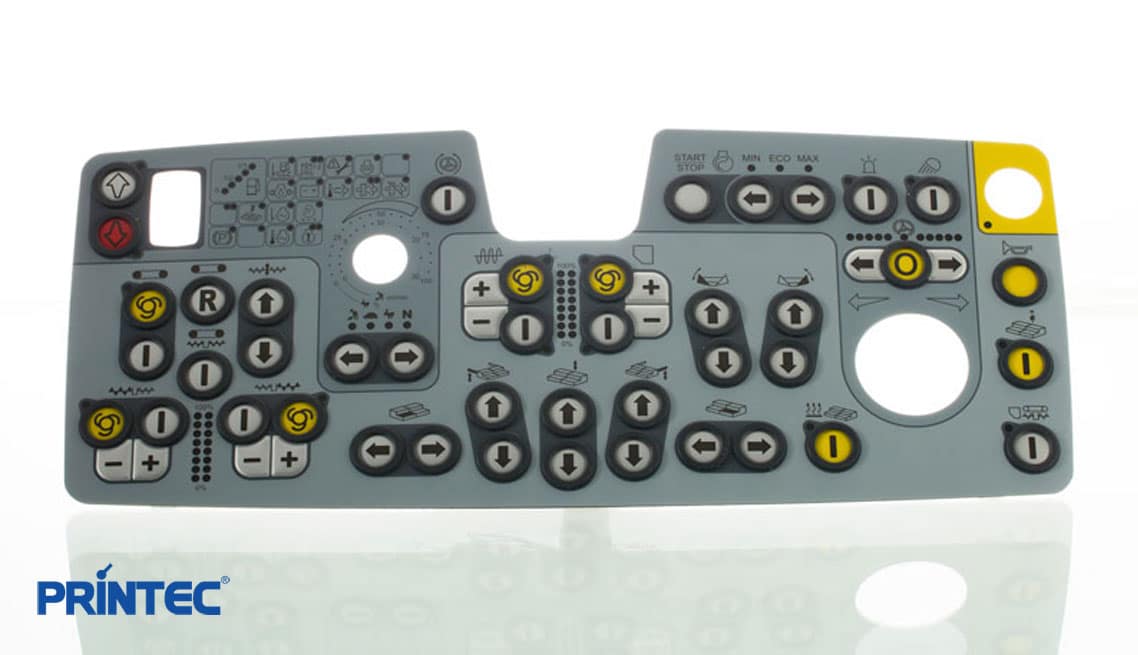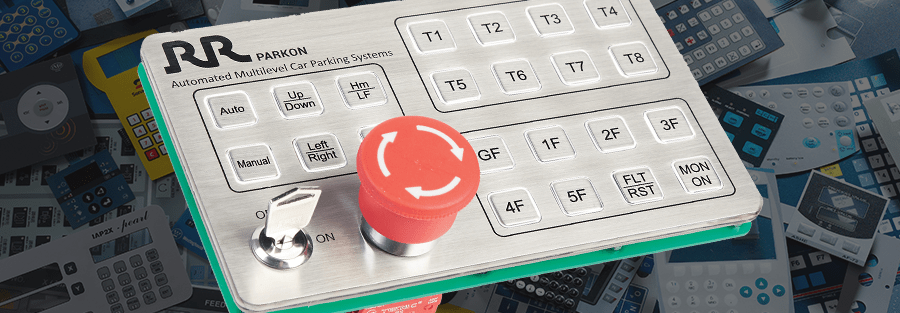The Ultimate Source on Membrane Switches Over: Layout, Capability, and Applications
Membrane layer changes act as a fascinating crossway of style and performance, playing a critical function in contemporary individual interfaces across various industries. This resource unloads the important parts that add to their effectiveness, consisting of graphic overlays and circuit traces, while additionally elucidating the mechanisms behind their stress activation. As we discover the varied applications of membrane layer switches, it comes to be obvious that their versatility and sturdiness are crucial in settings ranging from medical care to customer electronics. However, the nuances of their style and functional principles might disclose also deeper understandings worth taking into consideration.

Understanding Membrane Switches
Membrane layer switches are a kind of interface innovation widely used in different electronic tools, characterized by their thin, versatile layout and performance. These buttons include several layers that consist of graphic overlays, glue layers, and circuitry, making it possible for a reliable and compact interface for users. They can be found in appliances, medical tools, and commercial control panels, giving a trustworthy technique for customer interaction.
Among the primary advantages of membrane buttons is their capability to resist impurities such as dust and dampness, making them ideal for atmospheres where resilience is necessary. Their inconspicuous design allows for seamless integration right into various applications, while the adjustable graphic overlays boost user experience by providing clear aesthetic feedback. In addition, membrane layer switches can fit a variety of innovations, such as responsive comments and backlighting, more improving their use.
The manufacturing process for membrane switches over normally includes display die-cutting, lamination, and printing techniques, making certain precision and uniformity in production. Overall, membrane layer changes stand for a reliable and functional service for contemporary electronic gadgets, combining performance with visual allure in customer interface layout.
Key Components and Style Components
A range of key elements and layout components come with each other to produce an efficient membrane switch. At the core, the graphic overlay offers both useful and aesthetic objectives, providing an user-friendly user interface while safeguarding inner parts from ecological variables. The selection of products, generally polyester or polycarbonate, affects toughness and tactile responses.
Beneath the overlay, the adhesive layer ensures the switch adheres firmly to the substrate, which can be glass, steel, or plastic. The spacer layer is crucial, as it keeps the required space in between the overlay and the circuit layers, allowing for reliable actuation. Membrane Switches. Circuit traces, generally made from conductive ink or adhesive, are printed on a flexible substrate, allowing electrical signals to be transmitted when pressure is used
Style considerations also include the setup of responsive domes or embossing that supply physical responses to the customer, improving the total experience. Additionally, the design and spacing of the buttons must be enhanced for convenience of use, making sure that users can browse the interface intuitively. Generally, these elements and layout elements function synergistically to produce a trustworthy, functional membrane switch customized to certain applications.
Capability and Procedure Device
At the heart of efficient performance for membrane layer changes lies their functional mechanism, which assists in individual interaction through a basic yet effective layout. These buttons operate the concept of stress activation, where a her explanation customer uses pressure to an assigned area of the switch (Membrane Switches). This action presses the layers of the button, finishing an electrical circuit that sends a signal to the connected device
The construction typically includes a leading visuals layer, a glue spacer layer, and a bottom circuit layer, which collectively form a durable user interface. When stress is applied, the top layer falls down versus the lower circuit layer, enabling conductive traces to connect. This layout not just enables clear tactile responses however also ensures resilience and dependability, as the buttons are commonly resistant to dirt and dampness.
Additionally, the flexibility of membrane switches over permits integration with numerous modern technologies, including LED indications and microcontrollers, improving their functionality. By providing a streamlined interface that minimizes mechanical wear, membrane layer changes stay a favored option in applications ranging from customer electronics to commercial devices, guaranteeing optimum performance and customer fulfillment across varied environments.
Kinds Of Membrane Layer Switches

Another considerable classification is brightened membrane layer buttons, which incorporate backlighting to enhance visibility in low-light conditions. These switches are commonly made use of in control panels and control panels where clear visibility is important.
Additionally, there are custom-made membrane layer switches over made to fulfill details dimensional, visual, and useful needs. These modifications can consist of one-of-a-kind forms, shades, and designs, permitting seamless combination into various devices.

Applications Throughout Numerous Industries
Exactly how do membrane buttons enhance capability across diverse markets? These flexible elements are integral to numerous applications, supplying streamlined interface and durable performance. In the clinical industry, membrane buttons play a vital function in tools such as analysis equipment and patient surveillance systems, where dependability and simplicity of cleansing are vital. Their ability to withstand extreme atmospheres makes them ideal for research laboratory instruments and medical devices.
In the vehicle industry, membrane buttons are commonly used in control panels and control panels, supplying instinctive controls that enhance motorist safety and security and benefit. The customer electronic devices industry likewise profits from their lightweight and adjustable features, enabling sleek layouts for smartphones and home appliances.
Additionally, membrane layer switches find applications in industrial automation, where they add to effective equipment operation and tracking systems. Their resistance to dust and dampness makes click now sure functionality popular conditions (Membrane Switches). Additionally, the food and drink industry utilizes membrane layer buttons for tools control, where health and sturdiness are critical
Conclusion
In final thought, membrane switches stand for an essential development in user interface technology, identified by their one-of-a-kind design and capability. The versatility of membrane layer changes facilitates their application across varied markets, from medical tools to consumer electronics.
Membrane changes offer as a fascinating crossway of layout and functionality, playing an essential role in modern-day individual interfaces across numerous industries.Membrane layer buttons are a kind of individual interface technology extensively used in numerous digital devices, identified by their thin, adaptable design and capability.At the heart of efficient functionality for membrane switches over lies their functional mechanism, which promotes user communication through a basic yet efficient layout. These switches operate on the concept of pressure activation, where a customer applies force to a marked area of the switch.In conclusion, membrane changes stand for a vital innovation in customer interface technology, defined by their one-of-a-kind design and performance.